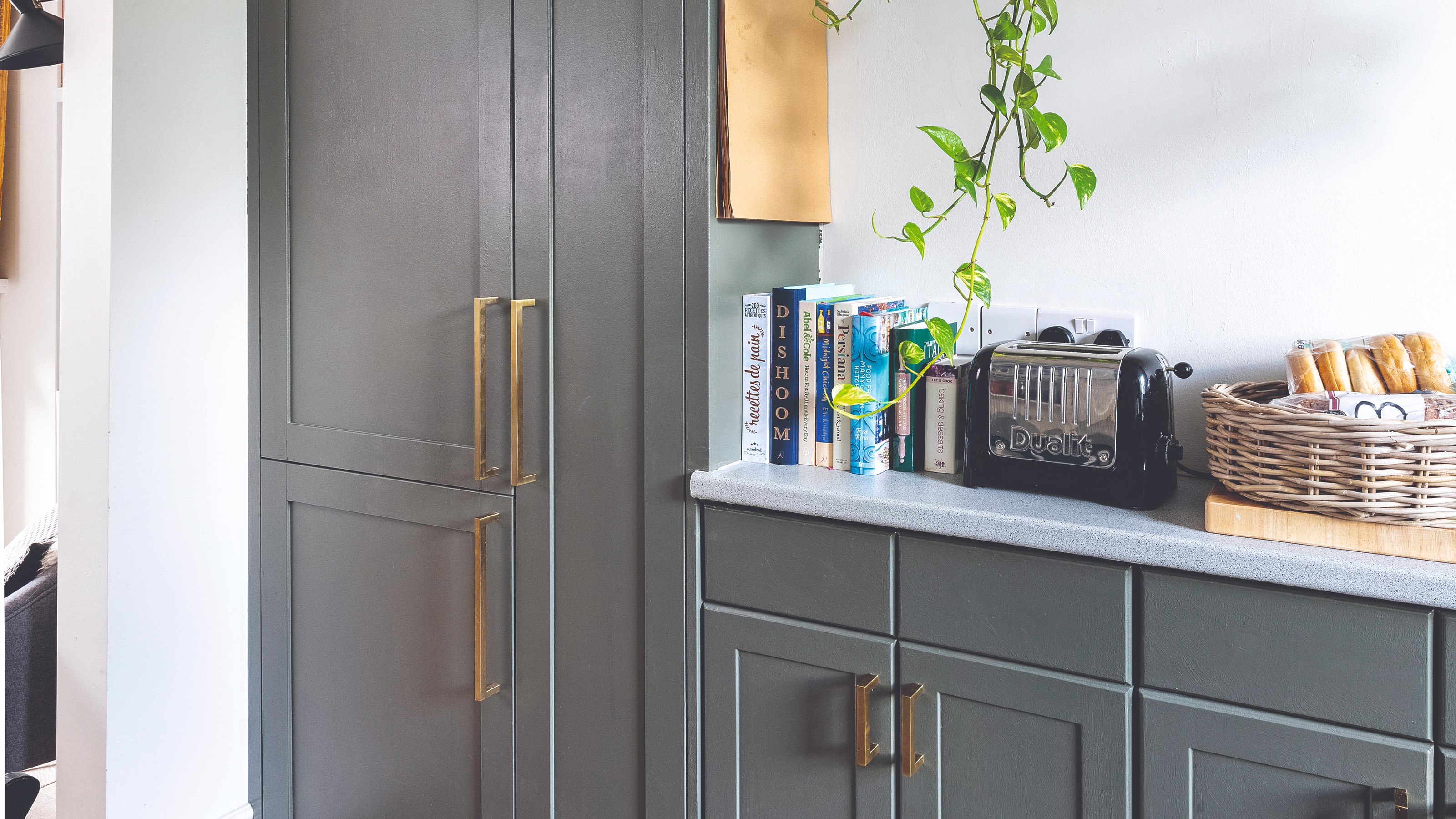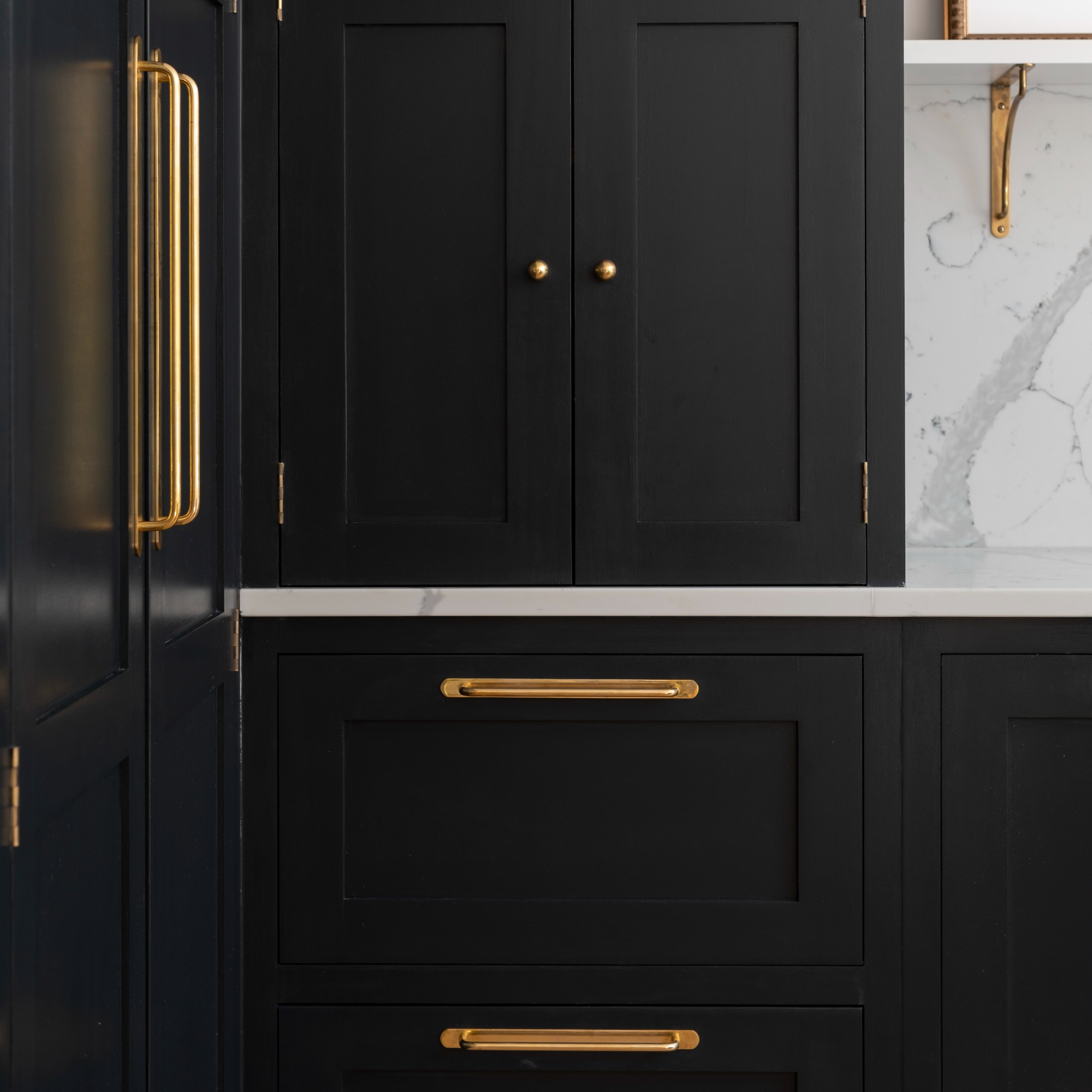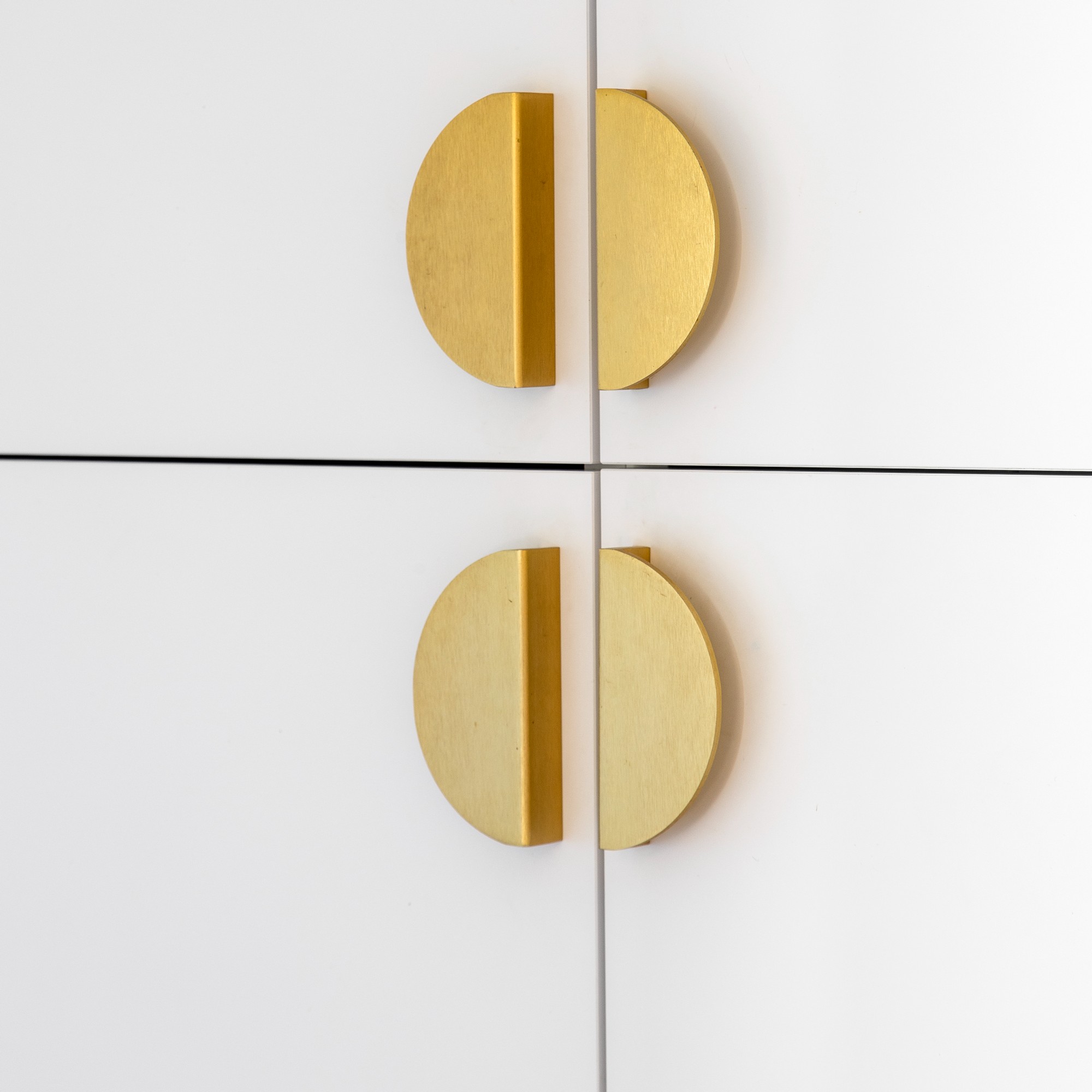How to bring brass door handles back to their former glory according to cleaning experts
It all depends on their finish...


Brass handles can easily elevate a room, creating a luxe feel in any space with their glamorous metallic finish. But their upkeep can prove tricky as they are often quick to fade. Not to mention if you purchase antique brass door handles, which are as beautiful as they are popular, but tend to be covered in many years-worth of grime layers. But if you’re wondering how to clean brass door handles you have come to the right place.
We have consulted our experts to bestow on us some pro cleaning advice and to find out what to do (and not to do) to keep our brass hardware nice and shiny for years to come. Just a heads up, know what kind of brass finish yours is.
How to clean brass door handles

There are many store-bought products targeted at cleaning brass which you can use. But if you are after something a bit more gentle and homemade, then our roster of experts has some suggestions, while recommending to stay away from harsh chemicals and looking to natural cleaning hacks.
‘To clean brass handles use lemon and salt,’ advises Laura Marsden, marketing manager at Marigold. ‘Cut a lemon in half and pour a good quantity of table salt on the exposed lemon surface, you can then use the lemon as a cleaning pad on the brass handles. Add more salt if you need to as you go along. Then, using a damp cloth, rub down the brass, removing any residue.’

While Laura at Marigold offers this easy-to-follow blanket solution, other experts recommend determining what finish your brass is - polished, brushed or unlacquered - before you decide on your cleaning solution and technique.
‘Whilst brass can be cleaned with most store-bought hardware cleaning products, to really see longevity in the product you can differentiate your cleaning routine based on the brass hardware you have,’ says Warren Kinloch, bathroom interiors expert at Bathroom Deal.
What you'll need
It will depend on the finish but here are some things you might need for your cleaning session.
Get the Ideal Home Newsletter
Sign up to our newsletter for style and decor inspiration, house makeovers, project advice and more.
- A microfibre cloth, like these Marigold Let It Shine On & On! Microfibre Cloths
- A soft-bristled brush, like this Selaurel Cleaning Brush at Amazon
- White vinegar, like this White Vinegar Spray Bottle at Amazon
- Baking soda, like Arm and Hammer Pure Baking Soda at Amazon
- Soap, like these OceanSaver Dish Washing Soap Bars at Amazon
How to clean brushed brass door handles
Brushed brass fittings are notable for being treated to a more matte, duller finish. The recommended formula for cleaning this type of brass is vinegar with warm water.
‘To clean brushed brass, opt for a mixture of warm water and vinegar, wiping with a soft-bristled brush to preserve its finish,’ Warren says.
How to clean unlacquered brass

If you’re going for the Jenna Lyons bathroom look that’s recently gone viral, you might be thinking about unlacquered brass fittings. This finish is defined by its more natural look, which shows signs of ageing more easily over time. That is part of its charm.
‘Whilst unlacquered brassware offers a natural finish which is very attractive when first installed, tarnishing is much more prevalent which can make maintaining the natural look a chore,’ says Colm Lalor, commercial director at bathroom company nuie.
He recommends ‘regular cleaning with a mild solution of soapy water and drying with a microfibre cloth to help maintain the natural appearance.’
But Warren from Bathroom Deal offers an alternative cleaning solution for this finish. ‘You can keep unlacquered brass squeaky clean and restore its shine with a natural paste of lemon juice and baking soda, followed by a soft cloth buffing.’
‘Abrasive cleaners, harsh chemicals and vinegar are very much not recommended as they can cause damage to the brass surface and chip at the natural patina,’ warns John Klee, bathroom trends analyst at Big Bathroom Shop.
How to clean polished brass

Lastly, if you own polished brass door handles then avoid anything overly abrasive. These shiny, very metallic accessories are best cleaned with something very gentle.
‘When cleaning polished brass, avoid abrasive cleaners and use mild soapy water with a microfibre cloth,’ advises Warren.
The after-care of brass handles
Don’t leave brass to air dry after giving it a good scrub. Unless you want to be left with annoying watermarks. Instead, give the handles a good wipe with a dry cloth right after you finish cleaning them.
‘Take a clean, dry cloth to completely dry the brassware,’ says John. ‘Make sure all moisture is removed to reduce the risk of water spots. The drying of the brass after each use is helpful in this regard, as fixtures can prove susceptible to water stains if left to air-dry. A wipe down with a towel or clean cloth will prevent the formation of mineral deposits.’

Sara Hesikova has been a Content Editor at Ideal Home since June 2024, starting at the title as a News Writer in July 2023. She is now also the Ideal Home Certified Expert in Training on Furniture, and so far has tested 80 different sofas.
Graduating from London College of Fashion with a bachelor’s degree in fashion journalism in 2016, she got her start in niche fashion and lifestyle magazines like Glass and Alvar as a writer and editor before making the leap into interiors, working with the likes of 91 Magazine and copywriting for luxury bed linen brand Yves Delorme among others.
-
 Will a conservatory add value to your home and how can you maximise it?
Will a conservatory add value to your home and how can you maximise it?This is what the pros say
By Amy Reeves
-
 I’ve been looking for a new signature scent for my home and The White Company's new fragrance is the exact summer holiday smell I needed
I’ve been looking for a new signature scent for my home and The White Company's new fragrance is the exact summer holiday smell I neededSantorini smells fresh, summery and sophisticated
By Kezia Reynolds
-
 How to remove algae from garden walls in five steps – and the cleaning product experts rave about for tackling it fast
How to remove algae from garden walls in five steps – and the cleaning product experts rave about for tackling it fastExperts share their top tips for getting garden walls algae-free
By Katie Sims